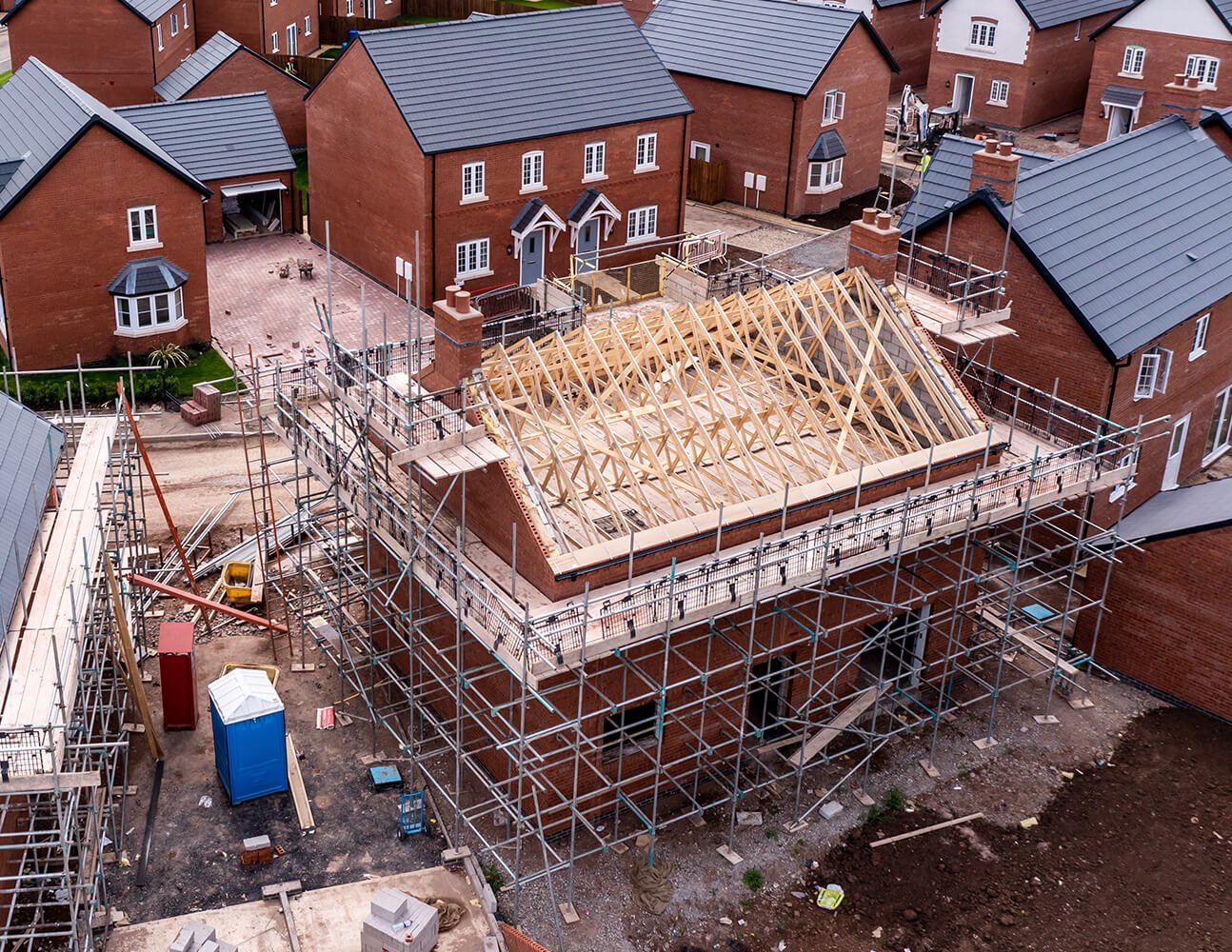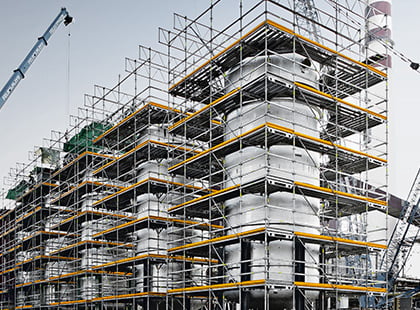Residential Scaffolding Solutions for Safe and Efficient Home Improvements
Residential Scaffolding Solutions for Safe and Efficient Home Improvements
Blog Article
Checking Out the Numerous Sorts Of Scaffolding Utilized in Construction Jobs
The building and construction industry counts greatly on numerous kinds of scaffolding to meet details task requirements, each offering distinctive advantages and applications. Typical frame scaffolding gives a tough foundation for basic tasks, while suspended scaffolding is crucial for job on skyscraper structures.

Standard Frame Scaffolding
Conventional frame scaffolding is just one of the most commonly used approaches in the building industry as a result of its toughness and convenience. This system consists of vertical and horizontal frames that are set up to develop a stable platform for employees and products. The primary components include upright messages, horizontal ledgers, and diagonal dental braces, which together offer a solid framework that can support significant tons.
One of the vital benefits of traditional structure scaffolding is its versatility to various building and construction tasks, ranging from household buildings to huge industrial structures. The modular style permits very easy setting up and disassembly, making it reliable for both temporary and long-term tasks. Additionally, the system can be tailored in elevation and width, suiting various building designs and website conditions.
Security is vital in scaffolding applications, and standard structure systems are furnished with guardrails and toe boards to stop falls and make sure employee protection. Furthermore, routine assessments and adherence to security guidelines are vital in keeping the stability of the scaffold. Generally, conventional frame scaffolding stays an essential option in the construction market, giving a trustworthy platform for labor and improving total job performance

Suspended Scaffolding
Suspended scaffolding supplies an unique solution for building and construction tasks that need accessibility to elevated surface areas, especially in scenarios where typical framework scaffolding may be impractical. This type of scaffolding is generally suspended from the roofing system or upper degrees of a structure, utilizing a system of ropes, platforms, and pulleys to produce a functioning space that can be adapted to numerous heights.
One of the primary advantages of suspended scaffolding is its adaptability. It can be conveniently rearranged or reduced to fit adjustments in building and construction needs, making it suitable for tasks such as home window installation, frontage job, and upkeep on skyscrapers. Furthermore, the very little footprint of suspended scaffolding permits for much better use ground room in city atmospheres, where space is often restricted.
Security is an important factor to consider in the use of put on hold scaffolding. On the whole, suspended scaffolding offers a efficient and efficient remedy for accessing hard-to-reach areas in various construction scenarios, improving both performance and safety and security on site.
System Scaffolding
System scaffolding, commonly pertained to as a modern service in the scaffolding market, is composed of pre-engineered elements that can be swiftly constructed and adapted for numerous building and construction projects. Scaffolding. This kind of scaffolding is identified by its modular layout, which permits adaptability and performance on work websites, fitting different heights and structural requirements
Normally made from high-strength steel or light weight aluminum, system scaffolding uses boosted toughness and stability. The elements include vertical posts, straight ledgers, and angled braces, which adjoin firmly, ensuring a robust structure. The layout usually incorporates standardized installations, simplifying setting up and disassembly processes, consequently reducing labor time and prices.

Rolling Scaffolding
Rolling Web Site scaffolding is a functional choice to standard fixed scaffolding, made for mobility and ease of usage on construction sites. This type of scaffolding contains a system sustained by frameworks with wheels, allowing employees to easily move it as needed. The movement attribute significantly improves efficiency, as it lessens downtime connected with dismantling and putting together taken care of scaffolding.
Commonly built from lightweight products such as aluminum or steel, rolling scaffolding uses a sturdy yet mobile remedy for projects requiring regular repositioning - Scaffolding. It is especially helpful in jobs such as painting, drywall installation, and electric job, where access to numerous elevations and locations is essential
Security is critical in rolling scaffolding layout, with attributes such as securing wheels to avoid unplanned motion when in use, and guardrails to protect workers from drops. Furthermore, several models are adjustable in height, suiting various project requirements.
Cantilever Scaffolding

The design of cantilever scaffolding usually includes utilizing braces or arms anchored to a structure or structure, enabling the system to extend external securely. Safety is extremely important; hence, these scaffolds must be engineered to endure ecological conditions and numerous lots. Regular examination and maintenance are important to guarantee architectural integrity and employee security.
Cantilever scaffolding is preferred for its flexibility and effective use of space, making it a prominent choice in urban settings where space restraints prevail. It assists in less complicated accessibility to high altitudes, inevitably contributing to the general effectiveness of construction jobs. Just like all scaffolding kinds, appropriate training and adherence to safety and security criteria are critical for workers using cantilever scaffolding.
Conclusion
Traditional frame scaffolding offers security, while suspended find more scaffolding provides flexibility for elevated jobs. System scaffolding assists in fast setting up, and rolling scaffolding boosts movement for differing work environments.
Typical frame scaffolding provides a tough structure for general jobs, while suspended scaffolding is important for job on skyscraper frameworks.Rolling scaffolding is a look at this website versatile choice to traditional fixed scaffolding, created for mobility and simplicity of use on building and construction websites. As with all scaffolding types, correct training and adherence to safety and security criteria are vital for workers making use of cantilever scaffolding.
Conventional frame scaffolding provides security, while put on hold scaffolding uses convenience for elevated tasks. System scaffolding promotes quick assembly, and rolling scaffolding enhances wheelchair for differing job atmospheres.
Report this page